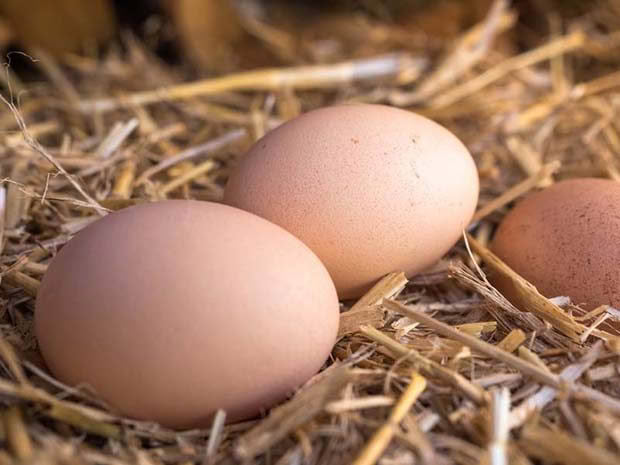How to pop an egg in the post

One of the most economic ways to get a new breed in your coop is to get someone to post fertile eggs.
Words: Sue Clarke & Nadene Hall Photo: Dreamstime.com
Millions of eggs for hatching are shipped all over the world, every day. Tens of thousands leave New Zealand every week by air for various destinations, mainly to the Pacific Islands and south Asia, but even as far as Bhutan and Japan.
Hatching eggs usually travel 30 eggs to a tray, six trays to a cardboard box. The boxes are stacked on a pallet – about 8000 eggs per pallet – and then the whole lot is encased in shrink-wrapped plastic.
Commercial poultry breeding stock come into New Zealand as hatching eggs on a regular basis, mainly from North America, from health-checked stock. These eggs are then transported, hatched and reared here under very strict quarantine conditions.
Many people think once an egg is laid, it must be kept warm by the mother hen, but chickens (and birds generally) are pretty clever. They have evolved to lay a clutch of eggs over a week or two – a hen can only lay one egg every 25 hours at most – then begin sitting, ensuring her eggs hatch on the same day.
This little magic trick of nature means it’s possible to send eggs by mail so you can get a new breed on your block without having to transport live birds.
Egg-cellent tips
• As long as the eggs are clean (not washed or scraped), stored below 18°C and above 10°C, and are as fresh as possible – preferably no older than one week since laying – their chances of hatching as well as those that are kept on the breeder’s property are good.
• The eggs should be cooled from laying temperature (42°C) to storage temperature (10-18°C) in the six hours after laying. Ask the breeder if they do this and how they store their eggs – they should be stored with the pointed end down.
• If eggs are too fresh (ie, it’s under 24 hours since the egg was laid) they do not hatch as well as those left for 24 hours or more.
• If you store eggs longer than one week they should be turned gently each day by tipping the container 45° one way and then the other, or they should be turned upside down, and then back again the next day. This keeps the yolk from drifting upwards and sticking to the inner membranes.
• For transport, eggs will travel fine if packed securely. The best way is for a breeder to use the cardboard egg tray/flats you get at the supermarket, cut down to fit the number of eggs that are being sent. Another can be put on top and then the whole lot should be bound together with tape, then packed in a shoebox or similar. All the space around the tray should be packed with crumpled newspaper.
• If you use the normal egg carton (6 or 12 size) you will have to pack inside the lid firmly with crumpled newspaper.
• Always transport pointed ends down. When the eggs arrive, keep them at around 16-18°C until you are ready to put them under the broody hen or in the incubator.
Love this story? Subscribe now!
 This article first appeared in NZ Lifestyle Block Magazine.
This article first appeared in NZ Lifestyle Block Magazine.
